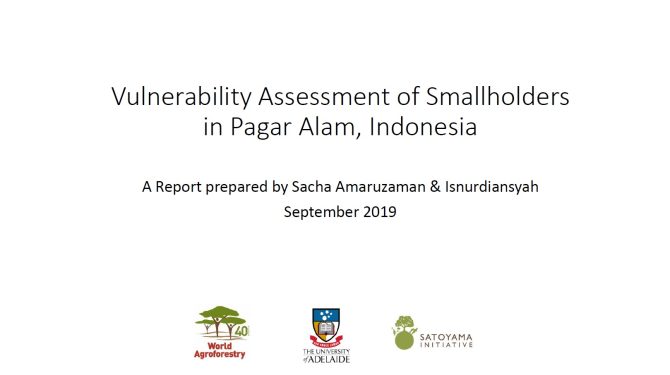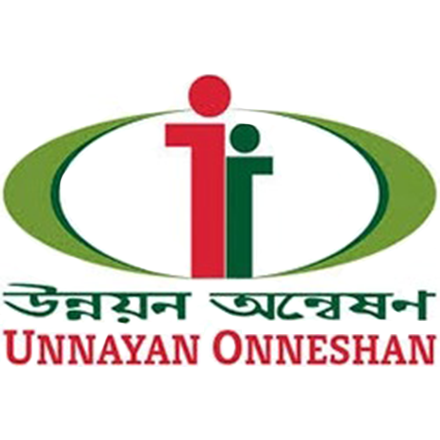Vulnerability Assessment of Smallhoders in Pagar Alam, Indonesia
The vulnerability assessment consists of the in-depth interview, observation, and focus group discussion (FGD) with the smallholders from July to December 2018. From July to August 2018, 23 persons were interviewed as the key informants. The interviews were undertaken to 11 government representatives (Planning Office, Forest Management Unit, Environmental Office, Agricultural Office, and Municipalities), and 13 local community leaders, coffee traders, and cooperative.
Eight upland villages in the forest margin were selected as the location of the FGDs (see the VA report for the FGD location map). These villages represented the different socio-economic and socio-ecological characteristic of Pagar Alam upland, with a proximity to the forest. About 173 farmers, 83 female and 90 female farmers joined the focus group discussions. Each group consists of 8 to 13 participants in each village, disaggregated by gender. The VA findings indicated that the smallholders in Pagar Alam were mainly vulnerable towards the price fluctuation and changing climate pattern. The coffee agroforestry system, however, is threatened by the expansion of seasonal crops, which provide better short-term income but might generate environmental risks, such as climate change and soil-water degradation. Based on the findings, the team formulated practical recommendations to improve farmers’ capacity and awareness on sustainable coffee, as well as their access to better coffee market. As a result, follow-up actions were carried out with support from the SDM Grant.
- Country
- Indonesia
- Organisation
- World Agroforestry Centre (ICRAF)
- Publisher
- World Agroforestry Centre (ICRAF)
- Publication date
- August 1970

